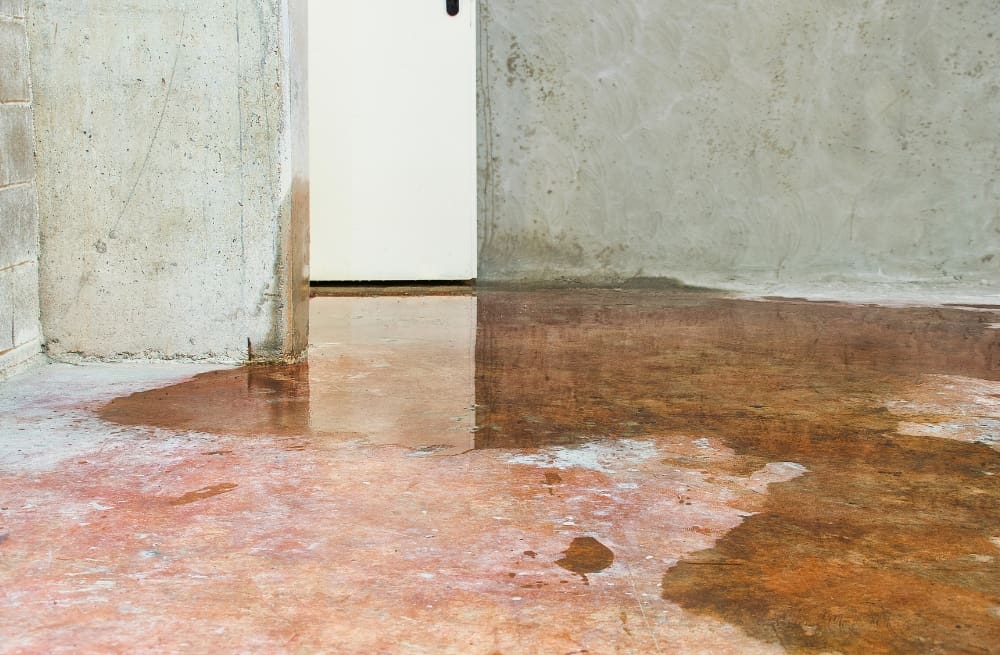As a homeowner, you may have noticed a drain in your basement floor that you’ve never thought much about. Basement floor drains are a critical part of your plumbing system and play a vital role in preventing water damage and flooding in your basement.
Whether you want to install a basement floor drain, have an existing drain that needs repairs, or simply want to learn more about your home or business’s plumbing system, this blog post will explain your every question about basement floor drains, including their role, how they work, common problems, and maintenance tips.
Basement Floor Drain 101
During our initial evaluation meeting with clients, we often encounter that many of them are unaware that they have a basement floor drain and don’t know how it works.
To clarify, a basement floor drain looks similar to a shower drain and is located under the house’s foundation, with a pipe that connects to either a collection pit or the local sewer system.
We understand this may be a new concept for some of our clients, and we are more than happy to answer some frequently asked questions they may have about it.
What is a basement floor drain?

A basement floor drain is a plumbing fixture that is installed on the floor of a basement. It collects water that accumulates in the basement and directs it to a sump pump or sewer line.
A basement floor drain is typically made of cast iron or PVC and consists of a circular or square grate that sits flush with the floor and covers a drain pipe leading to the sewer or septic system. The grate prevents debris and objects from falling into the drain and causing a blockage.
How does it work?
A basement floor drain helps in preventing flooding and water damage by directing excess water away from the basement. When water enters the drain, it flows through a trap, a U-shaped pipe holding a small amount of water to prevent sewer gases from entering the basement.
The water then flows through a series of pipes and out of the home through a sewer or septic system. Basement floor drains are typically installed in the lowest part of the basement floor, which allows water to flow naturally toward the drain.
In addition, some basement floor drains are equipped with a backflow preventer, preventing water from flowing back into the basement in case of a sewer backup. Basement floor drains are an essential part of any home’s plumbing system. They are vital in preventing water damage and maintaining a dry and safe basement.
What causes water accumulation in the basement?

There are many potential causes of water accumulation in your basement, such as a leaky water heater, torrential rain, and sewage issues. It is essential to have a basement floor drain in homes where the boiler is installed. If there is a significant leak, gallons of water can end up on the floor without the drain.
This water will stagnate and drain into the walls, building an environment conducive to mould and mildew growth.
Common problems with basement floor drains and solutions
Basement floor drains are an essential part of any home’s plumbing system. They help to prevent flooding and water damage by directing excess water away from the basement. However, like any other plumbing component, basement floor drains can experience problems over time. Here are some common problems with basement floor drains and their solutions:
- Clogs: Clogs are the most common problem with basement floor drains. They can be caused by dirt, hair, soap scum, and other debris.
- Leaks: Leaks can occur in the drain itself or in the pipe that connects the drain to the sump pump or sewer line.
- Damage: Damage can occur to the drain if it is not properly installed or maintained.
- Inadequate drainage: If the basement floor drain is not draining water properly, it may be due to a clog or a problem with the drain’s slope. A professional plumber can diagnose the issue and recommend the appropriate solution, which may include cleaning the drain or adjusting its slope.
Let’s learn all these problems in detail.
Leaking basement floor drain
A leaking basement floor drain can indicate a damaged or clogged drain pipe. It can also be caused by a loose or damaged connection between the drain pipe and the main sewer or septic line. If you notice water around the drain, addressing the issue promptly is essential to prevent water damage and mould growth.
Solution: The best solution for a leaking basement floor drain is to call a professional plumber to inspect the drain pipe and determine the cause of the leak. They may need to repair or replace the drainpipe or fix any loose connections.
Prevent flooding in the basement with a floor drain
While basement floor drains are designed to prevent flooding, they can become overwhelmed if they’re not properly maintained or if there’s excessive water. If your basement is prone to flooding, it’s essential to take preventative measures to protect your property.
Solution: You can install a sump pump or a backwater valve to prevent flooding in your basement. A sump pump removes excess water from the basement and pumps it outside, while a backwater valve prevents sewer water from flowing back into your basement.
Human or pet hair, dirt, and debris
Over time, human or pet hair, dirt, and debris can accumulate in the drainpipe and cause a blockage. This can lead to slow draining or a clogged basement floor drain.
Solution: To avoid a clogged basement floor drain, cleaning the drain regularly is a good practice. You can use a drain snake or a plunger to remove hair and debris from the drainpipe. A commercial drain cleaner can also be helpful to dissolve any clogs.
In conclusion, basement floor drains are essential to your plumbing system. Regular maintenance and prompt repairs can prevent common problems and ensure your drain works effectively. If you experience any issues with your basement floor drain, don’t hesitate to contact a professional plumber for assistance.
How to fix a basement floor drain?

Basement floor drains are susceptible to clogs due to dirt, debris, and hair accumulation. Clogs in basement floor drains can lead to flooding and water damage, making it essential to address them promptly. Here’s how to unclog a basement floor drain:
Maintain basement floor drains: The best way to avoid clogs in basement floor drains is to maintain them regularly. You can do this by cleaning the drain constantly and avoiding applying grease, oil, or other substances down the drain.
Clean out drains in basement floors: If your basement floor drain is clogged, the first step is to get rid of drain cover and clean out any visible debris using a tool like a plunger or a drain snake. You can also use a wet/dry vacuum to clear any remaining residue.
Unclog drainage pipes: If the clog is further down the drainpipe, you can use a drain snake to clear the blockage. Insert the drain snake into the drain and turn it clockwise while pushing it further down the drain. Once you reach the blockage, turn the snake counterclockwise to break up the clog. Then, pull the snake out of the drain and flush the drain with hot water.
Professional help from damp proofing specialists: If the clog is severe and you cannot clear it yourself, it’s best to call a professional plumber or damp proofing specialist for help. They have the tools and expertise to identify and remove stubborn clogs and can also check for any underlying issues with your plumbing system.
Unclogging a basement floor drain requires regular maintenance and prompt action when a clog occurs. To clear a clog, use a plunger or a wet/dry vacuum. If you’re unable to unclog the drain yourself, don’t hesitate to call a professional for help.






